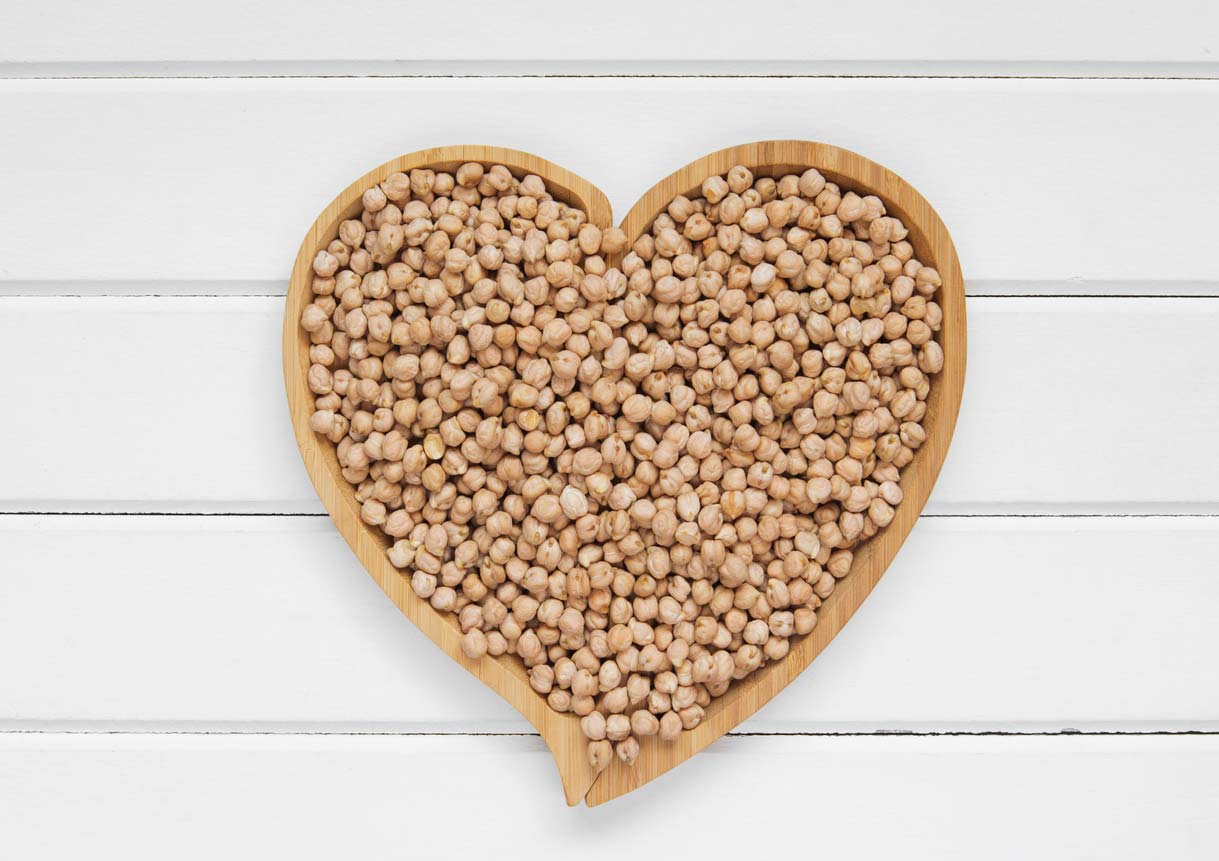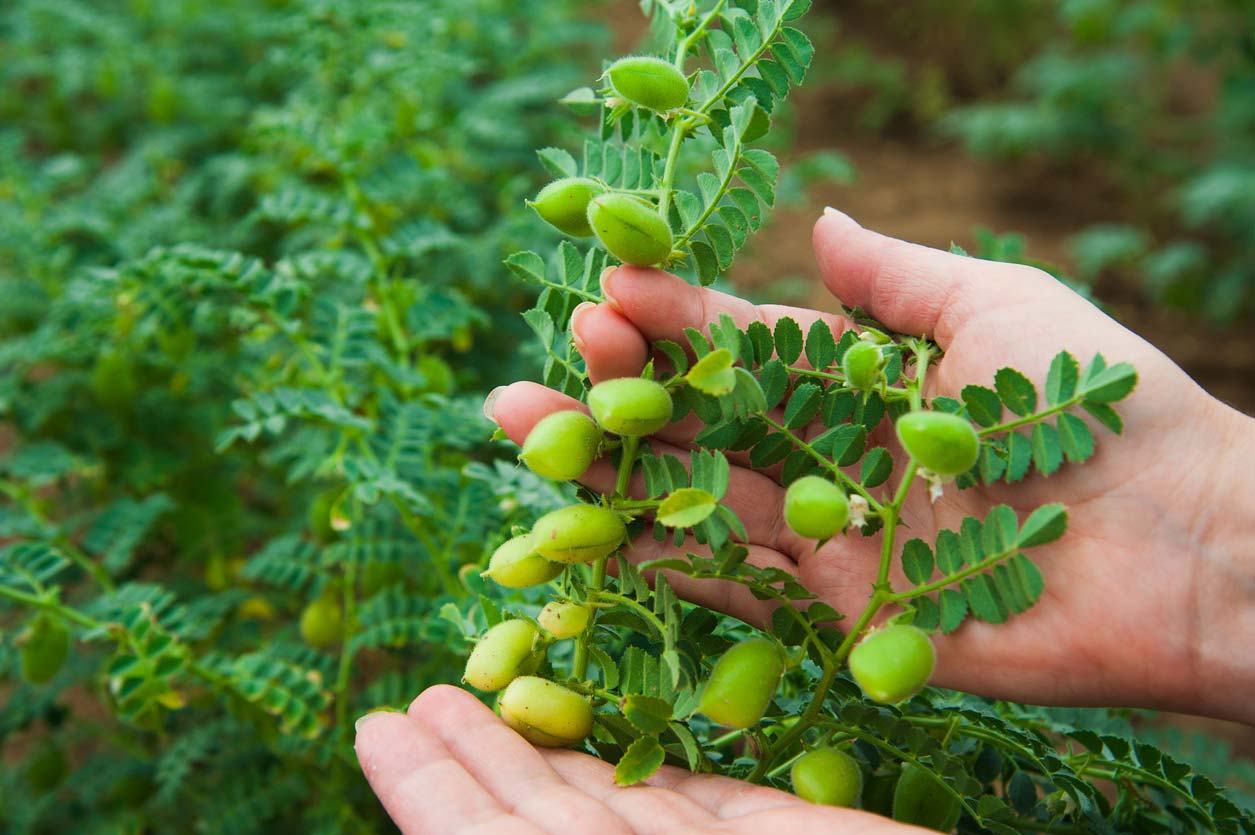Garbanzos Nutrition

Garbanzos and other legumes are some of the most nutritious foods on the planet. They’re a healthy source of fiber, plant-based protein, and a number of vitamins and minerals.
In a 1/2-cup serving of cooked garbanzo beans, you’ll find the following basic nutritional profile:
- Calories: 135
- Protein: 7 grams
- Fat: 2 grams
- Total Carbohydrates: 22 grams
- Fiber: 6 grams
Even in this small portion size of garbanzos, you’ll get a nice serving of magnesium, manganese, iron, phosphorus, copper, folate, and zinc. It also provides some calcium and B vitamins.
Benefits of Garbanzos

Garbanzos have proven themselves as a great source of nutrients, but what else makes them so deserving of a spot in the front of your cupboard? Research has shown that including garbanzos — and hummus — as a regular part of your diet is associated with a number of health benefits, including a lower risk for various diseases and improved overall nutritional status.
Anticancer Benefits
Beans is the first “B” in the acronym G-BOMBS (the second B is for berries, which are also great, but not the star of this article), coined by my friend and colleague Dr. Joel Fuhrman. G-BOMBS (Greens, Beans, Onions, Mushrooms, Berries, Seeds) describes some of the best anticancer and health-promoting foods on the planet that you should consider incorporating into your diet on a daily basis.
Beans and legumes are full of nutrient-dense carbohydrates that digest slowly to help stabilize blood sugar. They contain high levels of fiber and resistant starch, which are fermented by bacteria in your intestines, creating cancer-preventing fatty acids. In fact, eating legumes like garbanzos at least twice per week may cut your risk for colon cancer in half!
Cardiovascular Benefits
Authors of a 2015 study published in the journal Clinical Diabetes found that in addition to being a highly nutritious food, legumes like garbanzos can help prevent and manage a number of other health conditions. For instance, a high intake of legumes is associated with a lower risk for high blood pressure, heart disease, stroke, and type 2 diabetes. And eating them may help lower blood fats, like LDL “bad” cholesterol, which are known to raise your risk of developing heart disease.
Metabolic Benefits
Eating garbanzos may also make you less likely to develop metabolic syndrome. This describes a group of conditions associated with type 2 diabetes and heart disease. According to a 2020 study published in Applied Sciences, which examined data from the National Health and Nutrition Examination Survey (2005–2016), adults who ate chickpeas and hummus regularly were 48% and 62% less likely to have metabolic syndrome, respectively.
When combined with high glycemic foods, garbanzos can help reduce the overall glycemic load of the whole meal of which they’re a part. This means that they can help slow the rise in blood sugar and insulin response. One study found that adding garbanzos to white rice at a meal significantly reduced glycemic response compared to eating white rice alone.
Weight Management Benefits
Eating pulses (that is, the edible seeds of legume plants, and not the rhythmic beating in your wrist and neck), either by themselves or as a regular part of your diet, has also been found to help keep you feeling fuller and prevent overeating that could lead to unwanted weight gain. They’re also associated with lower body weight overall, smaller waist circumference, and lowered risk of obesity in epidemiologic studies.
Digestive Benefits
Furthermore, eating garbanzos contributes to improved digestive health. Legume consumption is associated with better bowel regularity and lower incidence of constipation. Plus, chickpeas may help reduce inflammation in the GI tract. One 2018 animal study found that supplementing mice with 20% cooked chickpea flour for three weeks before being induced with an inflammatory colon condition actually helped reduce inflammatory biomarkers, compared to mice not given the chickpea supplement. (Of course, it would be nice if humans could just give the mice chickpeas, without having to give them a disease, too.)
Downsides to Garbanzo Beans

Along with their many health benefits, garbanzos also come with a few things to be aware of, including possible digestive discomfort (at first), a legume-related allergy for some people, and easily dealt with nutrient and sourcing concerns.
Some people may take time to adjust to the chickpeas’ fiber content — similar to any other bean. If you’re not used to eating a lot of fiber-rich foods in your diet — like raw fruits and vegetables, whole grains, nuts, seeds, and other legumes — garbanzos may cause digestive symptoms like increased gas, abdominal cramps, or bloating. However, a 2011 study suggests that consumer perception of the link between eating beans and unwanted gas may be exaggerated. (Sadly, the published study, soberly titled “Perceptions of flatulence from bean consumption among adults in 3 feeding studies,” did not reference the ditty that starts with “Beans, beans, the musical fruit.”)
To minimize these effects, start with a small number of garbanzos and increase your intake of them slowly. Be sure to drink plenty of water for a smoother move through your digestive system.
What About Phytates?
Beans like garbanzos contain substances called phytates, which have been subject to some nutritional controversy. Like other substances found in plant foods, such as lectins and tannins, phytates have been dubbed “anti-nutrients” because they can bind to and inhibit the absorption of certain micronutrients when eaten around the same time.
How does this work? Phytic acid binds to certain essential minerals, including iron, calcium, zinc, and magnesium, which can make those minerals less bioavailable when consumed. This sounds like a bummer, but it’s been made out to be more alarming than it actually is for most people. Phytates seem to be most problematic when consumed in raw form. But last I checked, most of us aren’t sitting down to eat a bowl full of uncooked garbanzos or other legumes. (If you are, I want to meet your dentist!)
You can easily reduce the phytate content of legumes in your meal prep. Sprouting, cooking, soaking, and fermenting all help to destroy phytates and allow for increased mineral availability. (This is also true for lectins, which are really not a point of concern either so long as you cook your garbanzos properly.) If you choose to cook chickpeas from their dry form, soaking them will reduce phytates and increase the bioavailability of some of their nutrients. It’s ideal to soak beans for 24-48 hours, rinsing twice per day, before cooking.
Since garbanzos are not eaten raw (unless sprouted, and even then, we’d recommend cooking them), most of the phytates are destroyed before they hit your plate, so it’s not much of a concern. Eating a balanced, whole foods, plant-based diet, including plenty of vitamin C (which tends to support nutrient absorption) with your garbanzos, can help make sure you’re absorbing the vitamins and minerals you need.
Chickpea Allergy
While not heard about as often as peanuts or dairy allergies, chickpea allergies can occur. This is more likely if there is already an allergy to other legumes, especially lentils and peas. The most frequent reaction is hives or other skin reactions. If you suspect or are diagnosed with a chickpea allergy, it’s likely best to avoid them.
Glyphosate
Glyphosate, manufactured by Bayer under the brand name RoundUp, is a likely cancer-causing herbicide sprayed on crops such as wheat, garbanzos, and other legumes as a desiccant to speed up the harvesting process. Because of this, some caution is necessary when eating large amounts of conventionally grown garbanzo beans and products made with them, including hummus and garbanzo pastas.
While organic farms do not use RoundUp, unfortunately, choosing organic isn’t a guarantee of zero RoundUp exposure in this case. The Environmental Working Group (EWG) conducted testing on non-organic hummus and chickpea products and found the presence of glyphosate in 90% of them. They also tested 12 organic hummus and chickpea products and still found traces of glyphosate, though at much lower amounts than the conventionally-grown products.
Why is RoundUp still found in organic products even though its usage isn’t allowed in their production? Most likely, they were cross-contaminated by nearby crops sprayed with the herbicide.
Even though the EWG test results aren’t what we want to hear, the organization still says that people shouldn’t stop eating hummus and other chickpea products because of it. These foods are important sources of protein, fiber, and other nutrients in a healthy diet. Furthermore, the EWG says that even though small levels of glyphosate were detected in some organic products, choosing organic hummus is still better than not eating hummus or chickpeas at all.
What should you do to avoid glyphosate? Try to choose chickpeas and hummus that are lower in glyphosate or have non-detectable amounts according to the EWG test results table. And despite the presence of some glyphosate residues in organically grown chickpeas, they are likely to be lower in it. So go organic if you can.
Are Chickpeas a Sustainable Crop?

Garbanzo crops can help restore soil, and, if they’re well managed, can even sequester carbon from the atmosphere. Like all legumes, garbanzo crops also leave extra nitrogen in the soil they’re grown in for future crops to use, which can be especially helpful for growers who rotate crops.
Researchers from Trinity College Dublin have also said that chickpea pasta is a more sustainable alternative to pastas and grain products made from wheat. And they’re healthier for the consumer: The chickpea alternative was found to contain one and a half times more protein and over three times more fiber than durum wheat pasta.






Комментариев нет:
Отправить комментарий